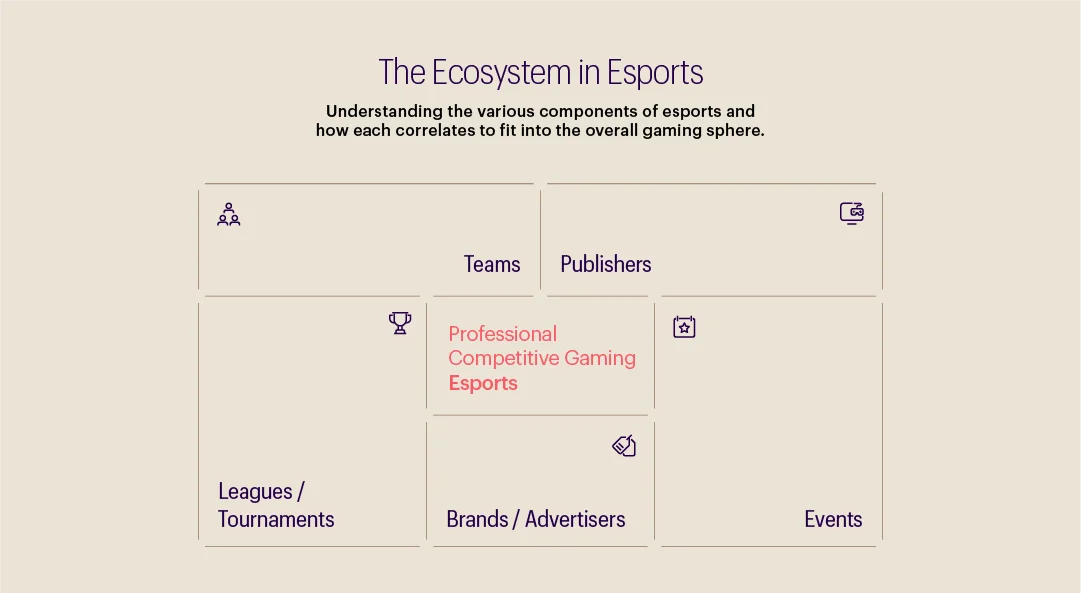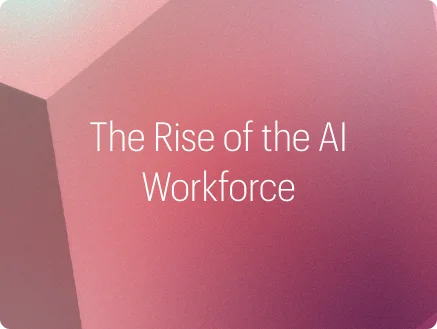What is esports and why does it matter?
It’s a Sunday in October 2021: around a million people from around the world are watching the livestream from Arena Națională in Romania to see Team Spirit fight for The International 10 trophy against PSG.LGD[1]. Behind the scenes of this online spectacle are a team of people equipped with the most advanced data visualization programs, crunching numbers almost in real time and making sure things go smoothly. A recent integration of a tooltip extension for twitch.tv has allowed viewers to interact with elements on their screen to find more information or switch between desired statistics. Streaming platforms and viewership APIs at one point report a peak viewership of around 3 million worldwide, setting a record.
Welcome to the world of esports, a fast-growing phenomenon in the media and entertainment industry that uniquely has data and analytics at the heart of its growth. Gaming today is one of the most popular hobbies in the world[2], but even when it was a niche hobby, there was growing interest in the competitive multiplayer possibilities gaming provided. This would lead to small, local events and tournaments in internet cafes and similar venues. Fast forward a couple of decades, and esports—thanks to a large and steady interest from investors and spectators as well as improvements in internet and computer hardware—has become a mainstream entertainment industry projected to make $1.8 billion in revenue by 2025[3]. Our earlier example of The International, a yearly tournament based on the game Dota 2, boasted a prize pool of $40 million in that iteration[1] while League of Legend’s Worlds tournament in 2022 had peak viewership of more than 5 million people worldwide [4]. The massive growth of esports as a global entertainment phenomenon has coincided with its data-driven approach. In this article, we’ll talk about how data and analytics are paving the way for the present and future of this young industry.

How data and analytics shape the esports industry
With running multiple virtual leagues and tournaments over a period inevitably comes a huge amount of data. Like traditional sports, esports has made use of these data and developed its own stat-tracking to account for long-term achievements and records. However, this is only the tip of the iceberg as to how essential data and analytics is to the esports industry today.
1. For investors and sponsors:
As a relatively new phenomenon in the media and entertainment industry, esports will have to prove sustainable as an investment for the long run. The young industry has witnessed incredible growth in the past decade and esports sponsorship and media rights revenue are projected to reach $1.2 billion in 2023[5] with investment expected to increase[6] over the years. Despite this, ROI worries and resulting investment hesitation are a recurrent topic[7]. When it comes to relatively younger industries such as esports, data-driven decisions can become crucial for investors and sponsors to put their money in the right place. The availability of metrics on websites like escharts.com exemplifies the importance of data in the esports ecosystem by providing continuous and accessible data across a multitude of games and leagues or tournaments. Data-driven analytics can augment this information with predictive models and forecasts, which may prove vital for a growing industry such as esports.
2. Tournaments and events – enhancing the viewer experience:
Narratives are essential to watching any league or tournament’s lifespan and statistics are what production crews and casters (commentators) need to have the set-pieces in play. Like traditional sports, finding and presenting the right insights for viewers to know who the teams or players to watch out for are or which key metric contributed to the previous game in a series can go a long way. The right databases and APIs paired with user-friendly dashboards can immerse viewers looking to understand key performances and deciding factors of high-tier gameplay from the comfort of their screens. Additionally, as a young entertainment phenomenon, there are understandably a lot of casual and newer audiences not familiar with the intricacies of a game in general. Good visualization and moment-to-moment tracking allows casters and analysts to have the proper tools to explain concepts to the audience while simultaneously building a narrative.
3. Competition beyond live tournaments:
In an interview, Lapointe Jameson, CEO of esports organization Evil Geniuses (EG) talked about how the organization had been using data and how they planned to make it a permanent part moving forward[8]. She mentioned that by employing analysts and engineers to track in-game metrics, bioinformatics (think DNA, RNA, genomic and metabolic data, etc.), and experimental data, they planned to find the right talent for teams. In addition to talent identification, she mentioned how data collection could assist coaches by freeing up time spent and possibly replacing the traditional strategy and analysis book with tablets and live data feeds in the future.
4. For developers behind the scenes:
Unlike traditional sports, esports titles (which is what games are called) are constantly being monitored and periodically updated by their developers to ensure an entertaining and fair playing field. Riot Games, the developers behind League of Legends confirmed on a previous blog post[9] that they relied purely on data and data interpretation to balance and update their game. They would take both pro-level esports league and tournament data as well as online gameplay data for this. Throughout the history of online multiplayer gaming, there have been no shortages of players looking to gain an unfair advantage. Cheaters and hackers not only compromise the reputation of a title but also make data unreliable. The thousands of multiplayer matches taking place at any time simply cannot not be monitored by human effort, especially as successful titles attract more players. In such scenarios, developers have turned towards AI and ML to help with detecting and catching cheaters, leaving human review to appeals and extreme cases. Riot’s Vanguard anti-cheat system and Valve Anti-Cheat (VAC)make use of technology in hopes that with more data and more advanced machine learning, AI anti-cheat will eventually eliminate the need for human intervention one day.
Data-driven decisions for a young industry
As an industry that has developed at a time where technology is integral to our lives (and will be for future generations), understanding how analytics and AI are transforming the media and entertainment industry not only makes for informed and entertained consumers but can help businesses update their investment decisions and allocation of budgets in areas such as advertising, travel, marketing, etc. Data and analytics will likely play a huge role as speculative investment and venture capitalists, who provide much of the investment for teams and organizers, may start to prefer well-informed decisions and reliable forecasts over speculation and hype alone.
From the casual viewer tuning in from their bedrooms to investors trying to see where the future of the industry lies, data and analytics can prove to be the key that unlocks the true potential of this young and exciting industry.
This is just the first in a series of articles on the Media & Entertainment industry today. Follow us on our social media to make sure you don’t miss out on the next articles.
Bibliography
1. escharts. “Dota 2 Esports Tournaments Statistics for 2023 – Escharts.Com.” escharts, 2021. https://escharts.com/tournaments/dota2?search=international.
2. Kunst, Alexander. “Most Popular Hobbies & Activities in the U.S. 2023.” Statista, August 25, 2023. https://www.statista.com/statistics/997050/most-popular-hobbies-and-activities-in-the-us/#:~:text=The%20most%20popular%20hobby%2Factivity,their%20personal%20hobbies%20and%20activities.
3. Gough, Christina. “Global Esports Market Revenue 2025.” Statista, August 29, 2023. https://www.statista.com/statistics/490522/global-esports-market-revenue/.
4. escharts. “Most Popular Esports Games 2022 | Esports Charts.” escharts, 2022. https://escharts.com/top-games?order=peak&year=2022.
5. escharts. “Dota 2 Esports Tournaments Statistics for 2023 – Escharts.Com.” escharts, 2022. https://escharts.com/tournaments/dota2?search=international.
6. Gough, Christina. “Future Esports Investments 2021.” Statista, January 18, 2022. https://www.statista.com/statistics/1247902/covid-impact-esports-investments/.
7. D’Anastasio, Cecilia. “The Hype around Esports Is Fading as Investors and Sponsors Dry Up.” Bloomberg.com, December 8, 2022. https://www.bloomberg.com/news/articles/2022-12-08/the-hype-around-esports-is-fading-as-investors-and-sponsors-flee.
8. Amenabar, Teddy. “Evil Geniuses Wants Data, Not Money, to Determine Success in Esports.” The Washington Post, June 29, 2022. https://www.washingtonpost.com/video-games/2022/06/28/evil-geniuses-nicole-lapointe-jameson/.
9. Summoner’s Rift, Team. “/Dev: Balance Framework Update – League of Legends.” /dev: Balance Framework Update – League of Legends, 2020. https://www.leagueoflegends.com/en-us/news/dev/dev-balance-framework-update/.


